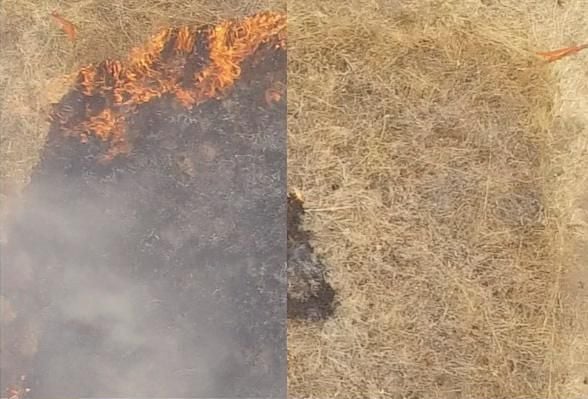This Gel Could Prevent Wildfires
Developed by Stanford researchers, the nontoxic, biodegradable gel can be sprayed on vegetation as a long-term fire retardant
/https://tf-cmsv2-smithsonianmag-media.s3.amazonaws.com/filer/79/e1/79e1495c-2f6d-4593-928a-5ecfa9c4dfec/california_wildfire.jpg)
Last year, 1.8 million acres of California were burned by wildfire. More than 100 people were killed and 17,000 homes destroyed. It was the state’s worst year ever for fire. By this April, the UK had already recorded more wildfires than any other full year. And this summer, the Arctic went up in flames in an “unprecedented” wildfire season.
Climate change is driving a surge in wildfires, and it’s only going to get worse. That’s why Stanford scientists have developed a preventative treatment. It’s a gel that can be sprayed on wildfire-prone vegetation to help protect it against flames. It has the potential to reduce both the number and the severity of fires.
“We hope these materials can help to equip wildfire managers and fire prevention foresters with the tools that will allow them to switch from exclusively reactive suppression strategies to proactive prevention,” says Eric Appel, a professor of materials science and engineering at Stanford who led the research published in the Proceedings of the National Academy of Sciences.

There are a number of fire retardants used on active forest fires, but they can easily be washed away by rain or blown away by wind, so they don’t last long enough to prevent new fires. The new gel-like material can be used as a carrier fluid for these traditional fire retardants, making them stick to vegetation throughout the wildfire season.
The gel is based on cellulose—plant fiber—and uses materials already approved for use in food, drug, cosmetic and agricultural products. It will last through an entire fire season, then slowly degrade. It can be sprayed by a firefighter on the ground or in larger amounts from a plane or helicopter.
Developing the gel was a three-year process. Appel and his team worked with the California Department of Forestry and Fire Protection to test the gel material on grass and chamise (a shrub common in California). They found that the gel provided 100 percent protection against fire even after half an inch of rain. In contrast, retardants typically used by firefighters would be gone or nearly gone by that point. The team is continuing to test the gel on roadside areas.
“The real proof is always in the pudding, and it was extremely satisfying to see the efficacy of these treatments at stopping wildfires,” Appel says.
The key to the approach is the fact that most wildfires happen in select high-risk areas, Appel says. They are largely caused by humans, happening over and over again in the same places—stray embers at campgrounds, tossed cigarettes on roadsides, sparks from electrical lines. So firefighters could prevent most fires by focusing solely on these areas.
“With the right tool in hand, you would only need to treat a small amount of land—not large swathes of the forest—to prevent most fires from occurring in the first place,” he says.
Alan Peters, a California Department of Forestry and Fire Protection division chief, monitored some of the test burns using the gel. "We don't have a tool that's comparable to this," he said in a press release. "It has the potential to definitely reduce the number of fires."
/https://tf-cmsv2-smithsonianmag-media.s3.amazonaws.com/accounts/headshot/matchar.png)


/https://tf-cmsv2-smithsonianmag-media.s3.amazonaws.com/accounts/headshot/matchar.png)